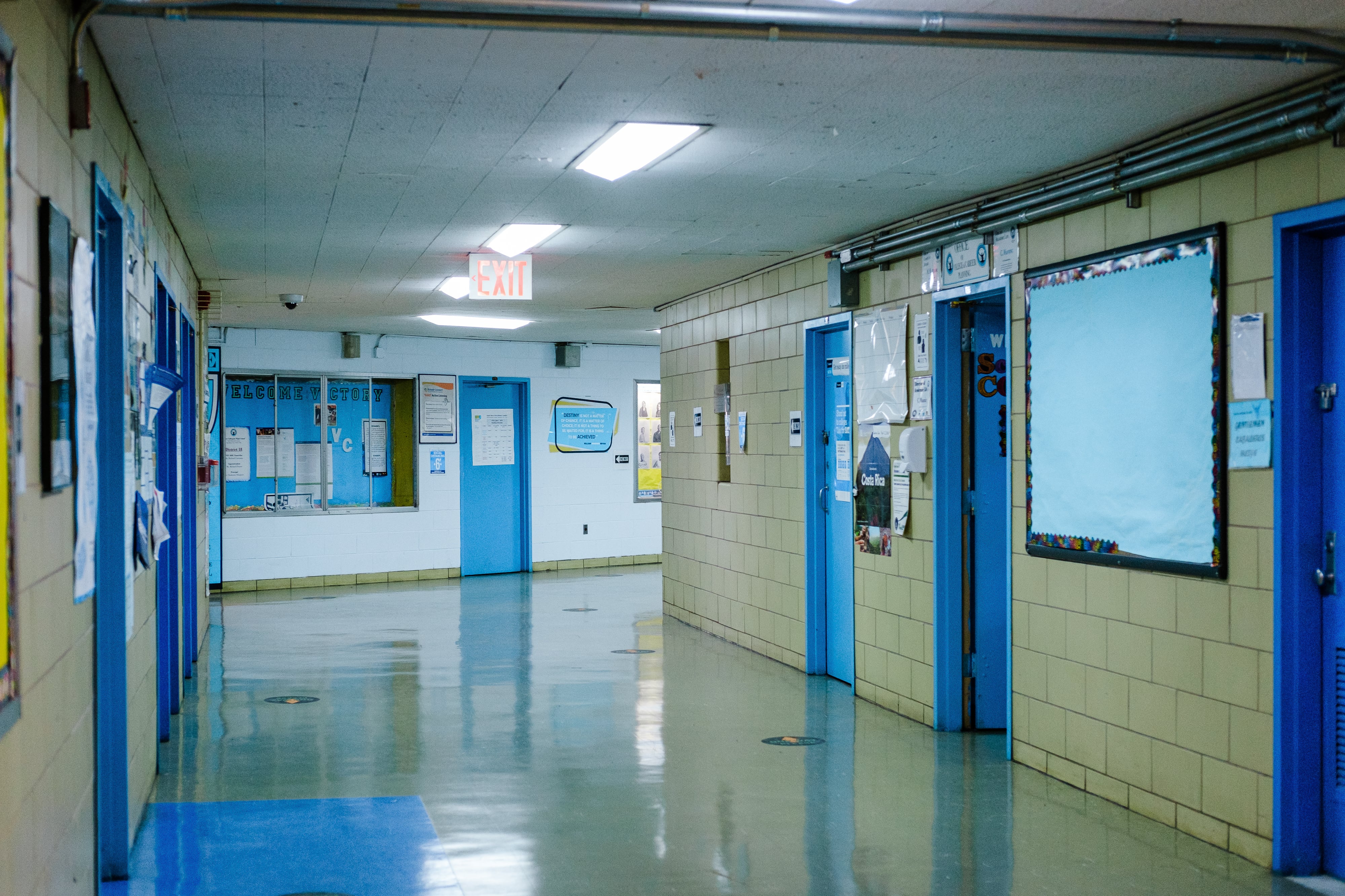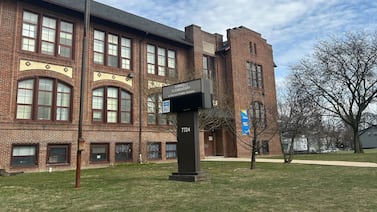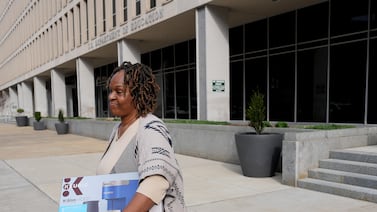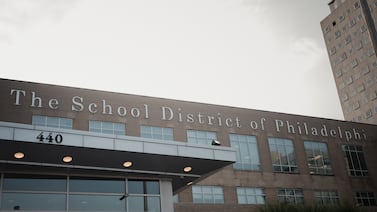Nearly 1 in 10 students in New York City public schools were homeless last school year, a rate that has stayed largely unchanged for the past six years, even as enrollment has dropped, according to new data released Wednesday.
A total 104,383 children lacked permanent housing last school year across district and charter schools, according to an annual report released by Advocates For Children New York, an organization that advocates on behalf of the city’s highest needs students.
Of those children, about two-thirds were “doubled up,” which means they shared a home with relatives or others because of financial challenges that prevented them from having their own home. Another 28% of these students were living in city shelters, while 5% of students were completely unsheltered — living in places like cars, parks, and abandoned buildings, according to the report. Nearly 360 children lived in hotels or motels.
The share of students who are homeless has largely not budged even as public school enrollment has dipped by 9.5% since the pandemic. This school year, schools also are facing a new challenge: enrolling and supporting thousands of new students in shelters, who are largely believed to be asylum-seeking children from South American countries.
“If these 100,000 children made up their own school district, it would be a district larger than 99.5% of all other districts nationwide,” Kim Sweet, executive director of Advocates for Children, said in a statement. “While the city works to address the underlying issue of homelessness, we also must ensure that students who are homeless get to class every day and receive the targeted supports they need to succeed in school.”
The increase comes as New York City has seen a steep rise in the number of homeless families with children entering shelters every night, according to city data. Rising housing costs and inflation have likely strained families across the five boroughs.
The number of students without stable housing grew by more than 3% across district and charter schools last school year, when children returned to classrooms full time for the first time since the pandemic hit. The data released Wednesday represents last school year. It follows a 9.5% dip during the 2020-21 school year — but advocates warned that could have been an undercount since most students were learning remotely at the time, making it tougher for educators to identify homeless students.
The rates of homeless students vary widely across different boroughs and community school districts. More than 20% of students were homeless in Bronx’s District 9, the highest rate of any of the city’s 32 districts. In contrast, just under 4% of Staten Island students lacked permanent housing.
Boroughs that tend to enroll a lower share of homeless students saw some of the largest increases last year. Queens saw the highest, with a 12% increase in homeless students, followed by a 7.1% increase in Staten Island.
It’s not clear why those boroughs saw such a steep rise, said Jennifer Pringle, director of Project Learning in Temporary Housing for Advocates for Children. She noted that the pandemic severely impacted Queens, in terms of illness, deaths and job losses. For example, Queens saw job losses at a rate higher than any other borough when the pandemic first hit, according to a report by the state comptroller.
Homeless students face transportation hurdles
Students who are homeless can face many challenges getting to school. In New York City, homeless students in grades K-6 are entitled to transportation to their schools, but families have often struggled to secure reliable busing. When they do get transportation, students in shelters that are far from their schools may face an hours-long commute.
Sometimes families opt to transfer their children’s schools to ease the commute, but that can also have significant drawbacks. One study from 2015 found that New York City students who transferred schools, which occurred more frequently among homeless students, were more likely to be chronically absent. Homeless students who were chronically absent, or missed at least 10% of school days, were three times more likely to repeat the same grade, compared to their homeless peers who missed fewer than five days of school, that report found.
While graduation data for last school year is not yet available, in the 2020-21 school year, just 70% of students who were homeless graduated, compared with 81% of all students. Twelve percent of those students dropped out, compared with 5% of all children.
This summer, Tanika Lashley was placed in a Manhattan shelter despite sharing with Department of Homeless Services staff that her son attends school in Williamsburg. When school started, his father would pick him up daily, following an overnight work shift, and drive him to school during rush hour, Lashley said. During the two weeks that it took for the education department to set up a bus route, Lashley’s son would arrive at school at 11 a.m., missing morning English lessons and earning low marks in the subject on his progress reports, Lashley said.
In the meantime, Lashley was written up at work for lateness because she had to wait for her son to be picked up before she could leave. She didn’t want to transfer her son to another school because she didn’t want to cause more disruption.
“Why should I have to pull him out of a school that he loves?” Lashley said.
A social worker at her son’s school connected her to Advocates For Children, which helped her request a shelter transfer. She entered the new shelter last week, located 20 minutes away from his school, and is waiting for officials to set up a new route for her son. But since they’re closer, her son is getting there on time with the help of his father.
“It’s really hard for mothers, especially single mothers, who are doing it on their own,” Lashley said. “This should not be interfering with a kid’s situation — they’re already going through homelessness.”
The data comes as the city has seen an influx of students seeking asylum from South American countries who are living in shelters, posing a new challenge for schools.
Helping asylum-seeking students in shelters
Schools this year have already enrolled roughly 6,000 new students living in shelters, largely believed to be asylum-seeking students. On top of the extra support that students in shelters need, many of these children are also learning English as a new language and need access to teachers and social workers who speak Spanish — something some schools have struggled to provide this year as they faced budget cuts.
For months, advocates have called for the city to begin hiring 100 shelter-based community coordinators, who are supposed to help families navigate the school system. The education department has not yet hired any of these staffers but has “begun the hiring process” and expects to hire people “soon,” said spokesperson Suzan Sumer.
There are currently 117 shelter-based “family assistants” who are supposed to ensure that families are getting help with enrollment, transportation, and other school-related issues, according to the department. There are also 107 school-based staffers who are tasked with identifying homeless students and ensuring they’re attending school.
In some school communities, parent volunteers are banding together to collect basic supplies for the new asylum-seeking families. At 75 Morton middle school in Greenwich Village, where about 45 newcomers have enrolled, the parent-teacher association has arranged a clothing drive and collected toiletries, backpacks and school supplies for new students and families, said Rebecca Lupardo, co-president of the PTA.
The school librarian created an Amazon wishlist for Spanish texts and, within three days, received 75 books, Lupardo said.
“They may stay in New York City, or they may find a home elsewhere or a better situation, or someone they know in another state even,” Lupardo said. “We’re providing for them in the best possible way we can.”
Reema Amin is a reporter covering New York City schools with a focus on state policy and English language learners. Contact Reema at ramin@chalkbeat.org.







